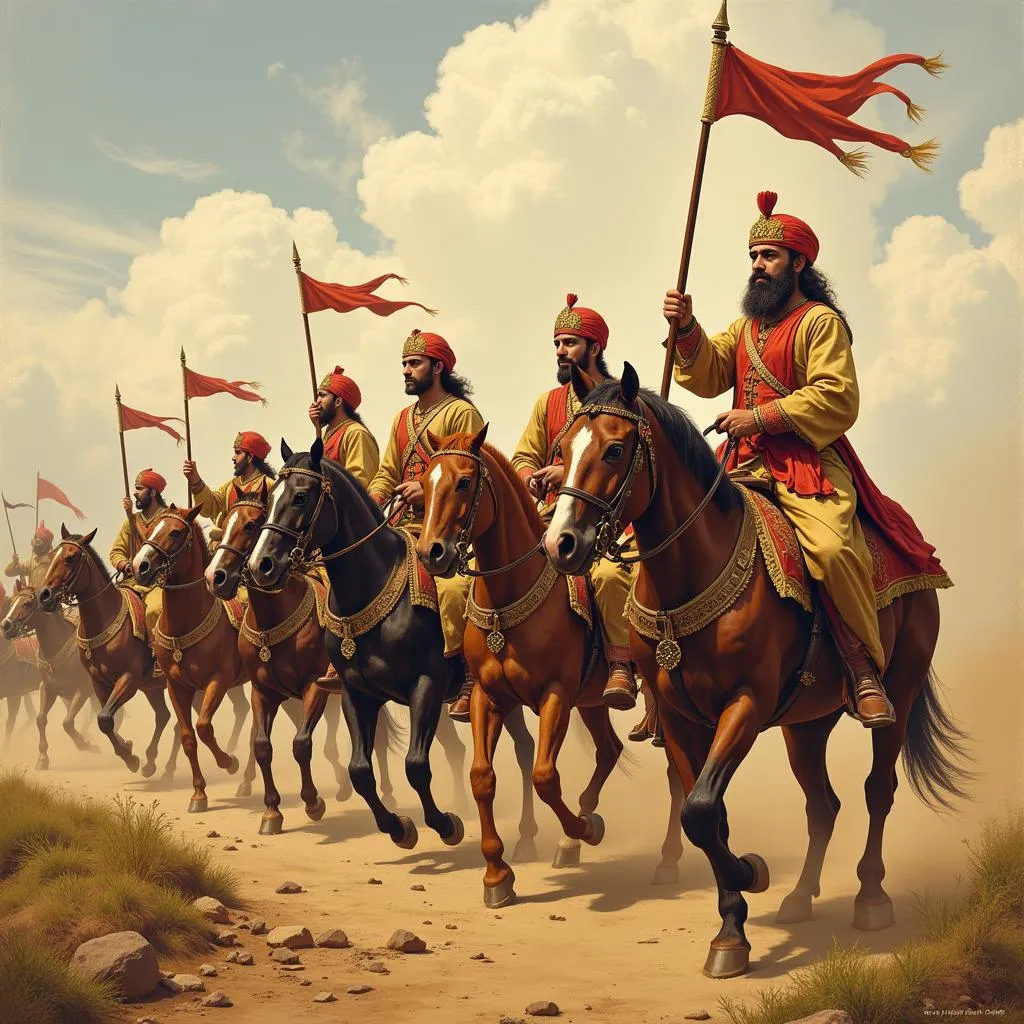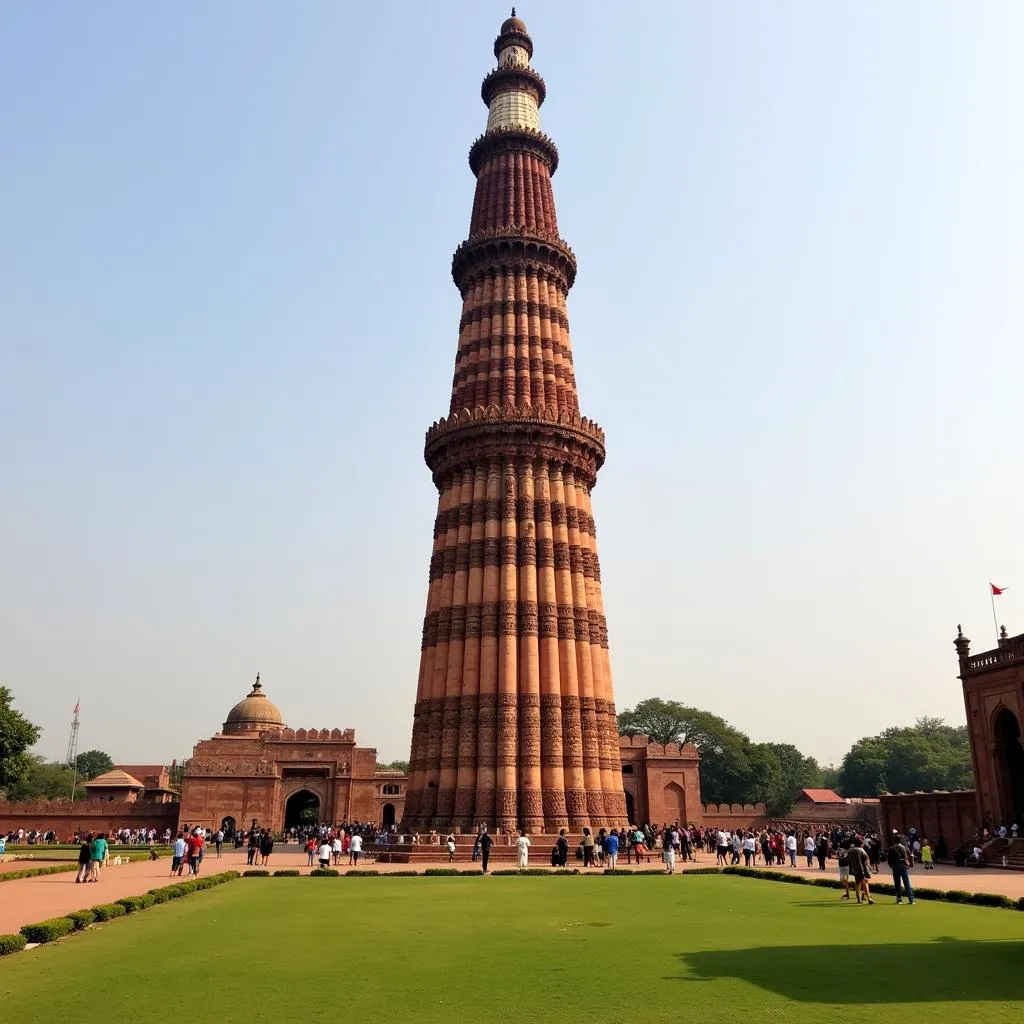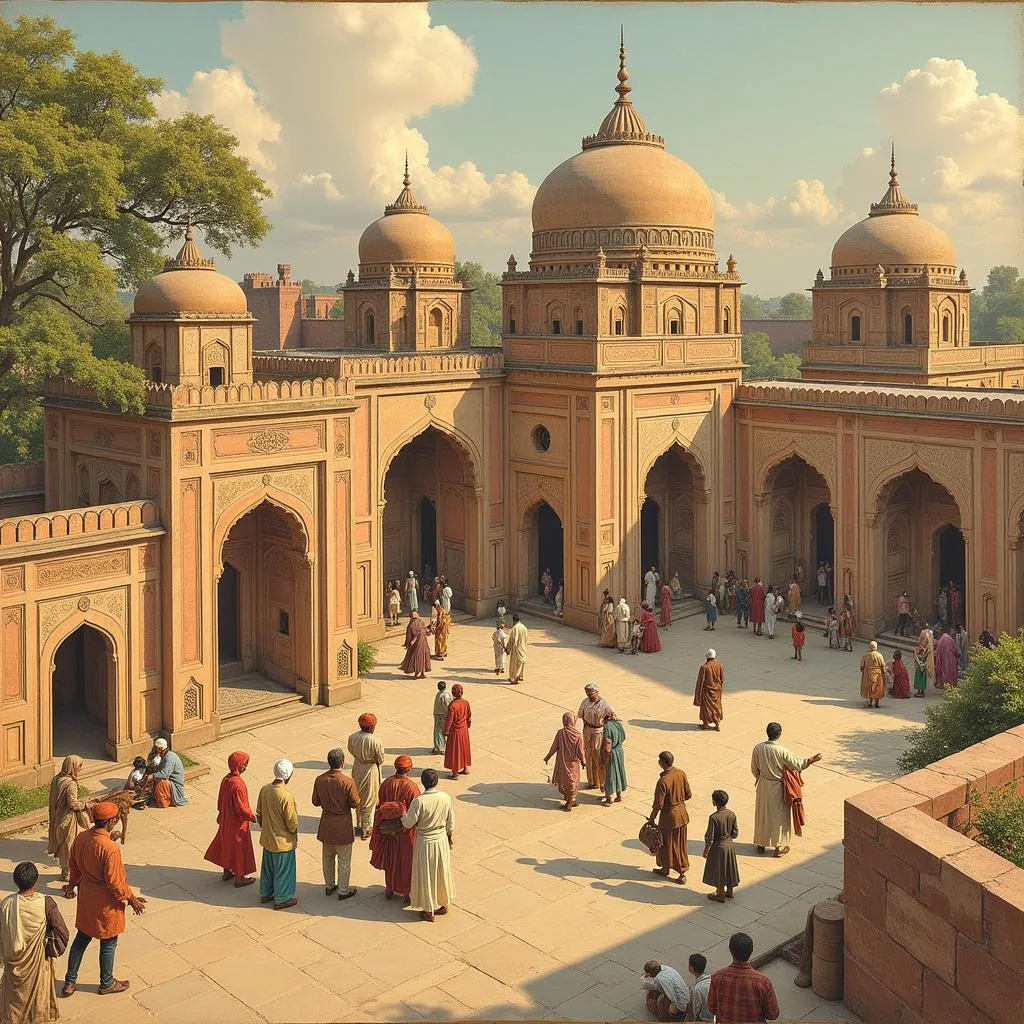The Delhi Sultanate, a period of Muslim rule in India spanning over three centuries (1206-1526), profoundly impacted the Indian subcontinent, leaving an indelible mark on its government, society, and culture. While marked by periods of conflict, this era also witnessed significant cultural exchange and the flourishing of art, architecture, and literature.
The Transformation of Governance: Military Might and New Administrative Systems
The establishment of the Delhi Sultanate introduced a centralized Islamic rule to India, replacing the previous system of fragmented Hindu kingdoms. This shift brought about several notable changes:
- Military Dominance: The Sultans, primarily of Turkic origin, established their authority through military prowess, employing skilled horsemen and adopting gunpowder technology. This military strength allowed them to expand their dominion and enforce law and order.
 The Delhi Sultanate's Military Power
The Delhi Sultanate's Military Power - Centralized Administration: A hierarchical administrative structure was put in place, with the Sultan at the apex, governing through a complex network of officials. This centralized system aimed to streamline revenue collection, maintain stability, and solidify the Sultanate’s control over vast territories.
- Introduction of Islamic Law: Islamic law, known as Sharia, was implemented alongside existing Hindu legal systems. While the application varied across regions and rulers, it impacted areas like family law, inheritance, and criminal justice.
Social and Cultural Impacts: A Tapestry of Change and Continuity
The Delhi Sultanate’s reign witnessed a complex interplay of cultural exchange, religious conversion, and societal shifts. Some of the key impacts included:
- Religious Conversions: While some conversions to Islam occurred, often motivated by social and economic factors, the majority of the population remained Hindu. This era saw the rise of Sufi saints who played a significant role in bridging religious divides through their message of love and tolerance.
- Architectural Fusion: The Sultanate period witnessed a fusion of Islamic and Hindu architectural styles. Mosques, tombs, and palaces were constructed, often incorporating elements like arches, domes, and calligraphy alongside traditional Indian motifs. The Qutub Minar, a towering minaret in Delhi, exemplifies this architectural blend.
 The Qutub Minar: A Symbol of Architectural Fusion
The Qutub Minar: A Symbol of Architectural Fusion - Patronage of the Arts: Many Sultans were patrons of art, literature, and music. Persian, the language of the court, flourished alongside regional languages, enriching Indian literature and poetry. The development of Indo-Islamic music, a harmonious blend of Indian and Persian traditions, can also be traced back to this period.
Economic Transformation: Trade, Agriculture, and Urban Development
The Delhi Sultanate, strategically located along trade routes, witnessed economic growth and shifts in agricultural practices:
- Trade Expansion: The stability brought by the Sultanate fostered trade with Central Asia, Persia, and beyond. New trade routes opened up, facilitating the exchange of textiles, spices, and other valuable commodities.
- Agricultural Innovations: The introduction of new crops, like Persian wheels for irrigation, and improved agricultural techniques contributed to increased agricultural output and a more diversified agrarian economy.
- Urban Growth: Cities like Delhi, Agra, and Jaunpur flourished as centers of administration, trade, and culture. The influx of merchants, artisans, and scholars led to the growth of urban centers and the development of vibrant marketplaces.
A Lasting Legacy: The Delhi Sultanate’s Enduring Impact
While the Delhi Sultanate eventually gave way to the Mughal Empire, its impact on India’s government and society was significant and long-lasting:
- Foundation for Later Empires: The administrative and military structures established by the Sultanate laid the groundwork for later empires, including the Mughals, who borrowed and adapted these systems.
- Cultural Synthesis: The cultural exchange and fusion initiated during this period continued to shape Indian art, architecture, music, and cuisine for centuries to come.
 Cultural Synthesis in the Delhi Sultanate
Cultural Synthesis in the Delhi Sultanate - A More Diverse Social Fabric: The Delhi Sultanate, despite periods of conflict, contributed to a more diverse and pluralistic Indian society. The interaction between Hinduism and Islam led to the emergence of new religious ideas, practices, and social structures that continue to shape India’s cultural landscape today.
The Delhi Sultanate, a pivotal period in Indian history, left an indelible mark on the subcontinent. While it brought about significant changes in governance, society, and culture, it also fostered cultural synthesis, economic growth, and the foundations for future empires. Understanding its legacy remains crucial for comprehending the complexities of India’s past and the enduring influences that continue to shape the nation today.